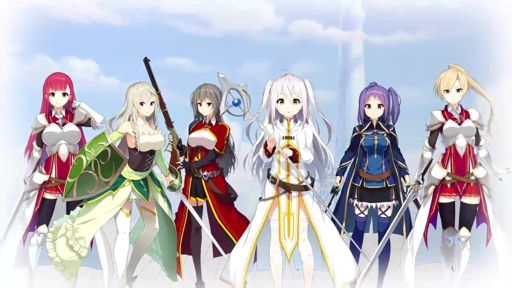
Read the over onNon twinkling vampires.Fortune Arterial is a 2008 by August. It got a 2011 re-release with Windows 7 compatibility.StoryKohei Hasekura transfers into Shuchikan Academy, a prestigious public school in the style of an English six-year school encompassing junior-high and high school students. The school is on an island named Tamatsu Island off-shore from mainland Japan, and the only way to get there is by boat.
Soon after transferring, he discovers that Erika Sendo, one of the students in the class next to his, is in fact a type of vampire.poor plot summary shamelessly stolen from. OMG SHE’S A VAMPIREReviewSo in the common style of August, what we have here is another school chara-ge with a fantastical element most developed in the true route (in this case an alternate route of the main heroine), this time that element being vampires. This being Japan, these vampires don’t have a weakness for sunlight, or for anything really, nor are members of the undead (though they do not have lifespan).
And one difference with, say, yoakena or daitosho, is that here that fantastical element is better exploited across the character routes, which are also less in number in the first place; the end result is that the plot density is overall greater. Not plot relatedNot.much. greater, though; two of the routes (the Yuuki sisters ones) are only tangentially (very tangentially) related to the main plot, and even though Shiro has an important role in the greater picture her route doesn’t really add much (her character is, plotwise, better exploited in the true route). And in the end, even though the vampire theme is better present all across the game, is still in the true route where is full exploited and solved. So this have my pet peeve of a true route that solves everything; probably the worst case of the three August school setting games I’ve played so far.But that’s something about which I complain frequently but that nobody else seems to care about; if you are like that then there’s not much wrong with this game. The true route does have an interesting mystery component, and seeing the main characters solve it is neat.
It also shows a lot of action from rest of the student council, good characters on their own (specially the president). I think the deal with the main antagonist was, in the end, solved too easily, all things considered; but besides that the ending is satisfying enough.
I’m singing in the rain ♪The character routes are also solid, be they related to the main plot or not. The developments feel natural, they don’t rush or drag (much), and there’s a good dose of drama without it becoming overbearing. And if there’s one thing August does well is the cast, and the Fortune Arterial one doesn’t disappoint, the characters being all diverse, amusing, and/or charming. Even if these routes are never mind-blowing, there shouldn’t be a lot of room to hate them.
Even the usual “didn’t end with any heroine” end is not the usual Forever Alone ending, which is a nice touch and worth checking. If there’s a missed chance here is that the school setting gives little chance for Bekkankou to show his more fantastical designs. A fair number of nice vocal tracks gives this also a good score in the music department. Tea partySo if we compare this to the previous yoakena, the game structure shows an improvement: the common route is less painfully irrelevant (and considerably shorter), the routes less generic, and the plot better exploited. Personally I liked more the lost technology setting, and Feena more than Erika, and nothing here reaches the levels of Mai route, but it can be argued that this is a step up from yoakena.But then there’s not much more else to say. It’s a fun read, and as a chara-ge it may be above average, but there’s nothing truly outstanding.
If you played other August games you know what to expect.Read the over on.
Visual Novel Dek-d


Visual novels are a medium using the narrative style of, but in a digital format that could technically be considered a. Note They tend to put more emphasis on the plot and on characterization, rather than on action scenes, like and more so than. Visual novels are effectively seen as a digital evolution of books, with music, pictures, and occasionally even voice acting or movies. However, unlike most Choose Your Own Adventure books, they, and can have a lot more choice points (since they're digital and therefore don't suffer from physical limitations). Puzzles, quests and escape games are often embedded within the plot in order to advance the storyline(s).
The level of gameplay can vary, leading to difficulty in defining the boundaries of the medium. On the far video game end of the scale we have games that adhere closer to the model such as the series. Note Some of the earliest examples of games now considered visual novels, such as, are in fact adventure games in all but name, complete with text parsers and/or point-and-click interfaces; the distinction between the two genres is largely a matter of divergent evolution. (visual novels completely devoid of interaction) and exist on the other end of the scale, such as. The majority of visual novels, however, tend to focus on non-linear plots with and often a. Because they are treated as games, the fact that many of them tell well-written, compelling stories can be easily overlooked.
Many visual novels are restricted to Japanese markets (and for a long time, they largely were), but games such as, the series, the series and the series have popularized the genre internationally.It is also not uncommon for acclaimed to be based on visual novels, such as, and.Visual novels that are also tend to, a habit which has carried over to much of the rest of the medium.Because the market for is virtually non-existent outside of Japan, people tend to assume that any visual novel that is a should be called a dating sim, when they are actually quite different. (It doesn't help that most -style are marketed as 'dating sims' when they are translated for the US market.) Using well-known examples, the series has very much a style of gameplay, while the Xtreme series is probably the game closest to a true with mass-market appeal in the US.Most Japanese visual novels, though this is beginning to change with companies such as MangaGamer, JAST and Sekai Project licensing more and more visual novels. Still, the bulk of visual novels are if they are translated at all. Many of the novels on this list have an existing, partial or full.Before, most visual novels that did get localized suffered from the same problems that anime in the early '90s did:. However, with the advent of, its Greenlight program, and crowdfunding sites like (all of which have also aided the revival of Western ), the number and availability of visual novels outside Japan have been steadily expanding.